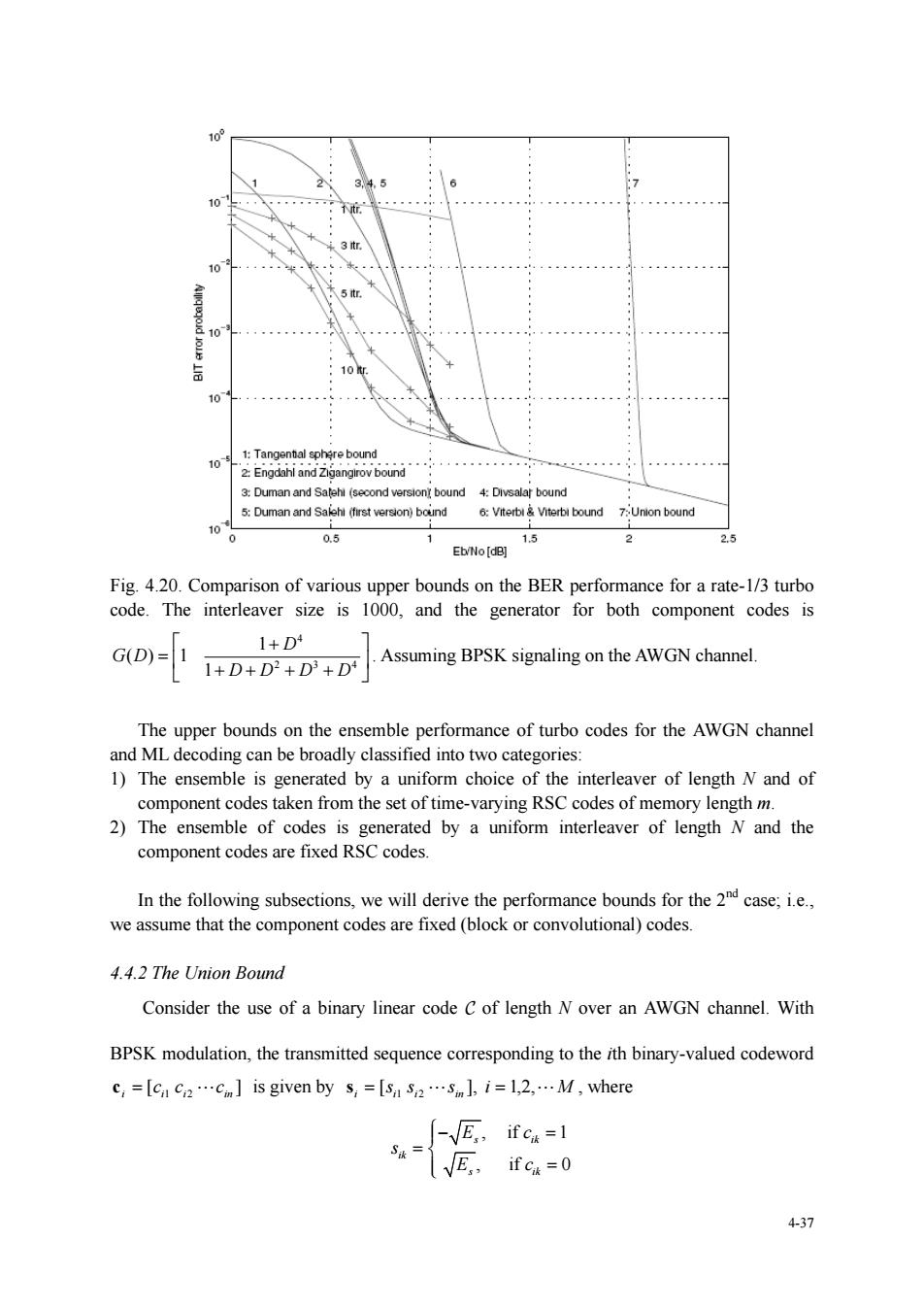正在加载图片...

3比 10 o2E29o 5:Duman and Saieh(rt verson)boind Vrterb Vrterb boundUnon bound 1o0 0 1 Fig.4.20.Comparison of various upper bounds on the BER performance for a rate-1/3 turbo code.The interleaver size is 1000,and the generator for both component codes is G(D)=1 1+D4 1+D+D2+D+D Assuming BPSK signaling on the AWGN channel. The upper bounds on the ensemble performance of turbo codes for the AWGN channel and ML decoding can be broadly classified into two categories: 1)The ensemble is generated by a uniform choice of the interleaver of length N and of component codes taken from the set of time-varying RSC codes of memory length m. 2)Theensemble of cod ted by a uniform interleaver of length N and the component codes are fixed RSC codes. In the following subsections,we will derive the performance bounds for the 24 case;i.e., we assume that the component codes are fixed (block or convolutional)codes. 4.4.2 The Union Bound Consider the use of a binary linear code C of length N over an AWGN channel.With BPSK modulation,the transmitted sequence corresponding to the ith binary-valued codeword c,=[Cn Cncm」is given by s,=[sas2.snli=l,2.M,where -√E,ifc4-1 √E,ifck=0 437 4-37 Fig. 4.20. Comparison of various upper bounds on the BER performance for a rate-1/3 turbo code. The interleaver size is 1000, and the generator for both component codes is 4 234 1 () 1 1 D G D DD D D . Assuming BPSK signaling on the AWGN channel. The upper bounds on the ensemble performance of turbo codes for the AWGN channel and ML decoding can be broadly classified into two categories: 1) The ensemble is generated by a uniform choice of the interleaver of length N and of component codes taken from the set of time-varying RSC codes of memory length m. 2) The ensemble of codes is generated by a uniform interleaver of length N and the component codes are fixed RSC codes. In the following subsections, we will derive the performance bounds for the 2nd case; i.e., we assume that the component codes are fixed (block or convolutional) codes. 4.4.2 The Union Bound Consider the use of a binary linear code of length N over an AWGN channel. With BPSK modulation, the transmitted sequence corresponding to the ith binary-valued codeword [ ] i i1 i2 in c c c c is given by si [si1 si2 sin ], i 1,2,M , where , if 1 , if 0 s ik ik s ik E c s E c